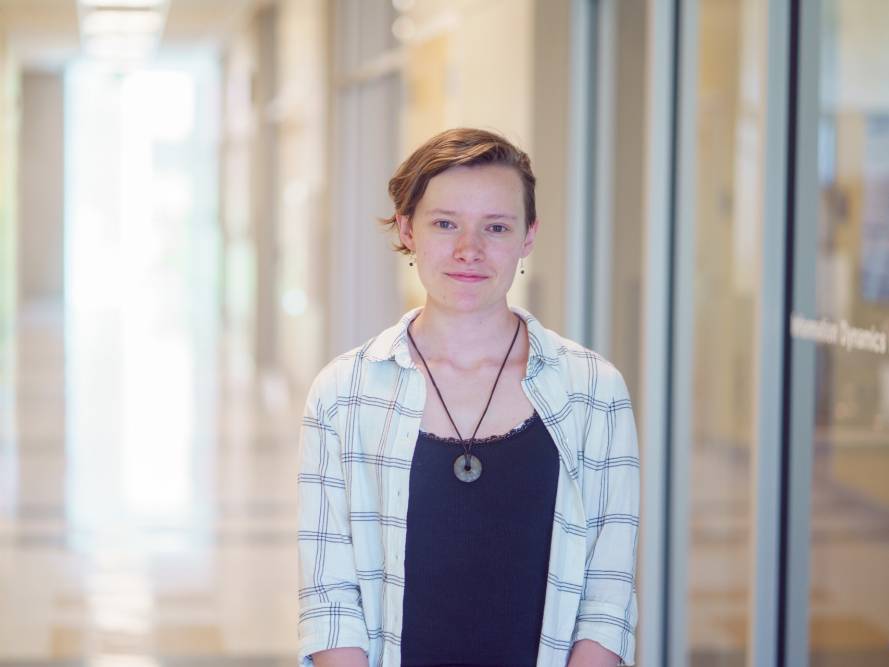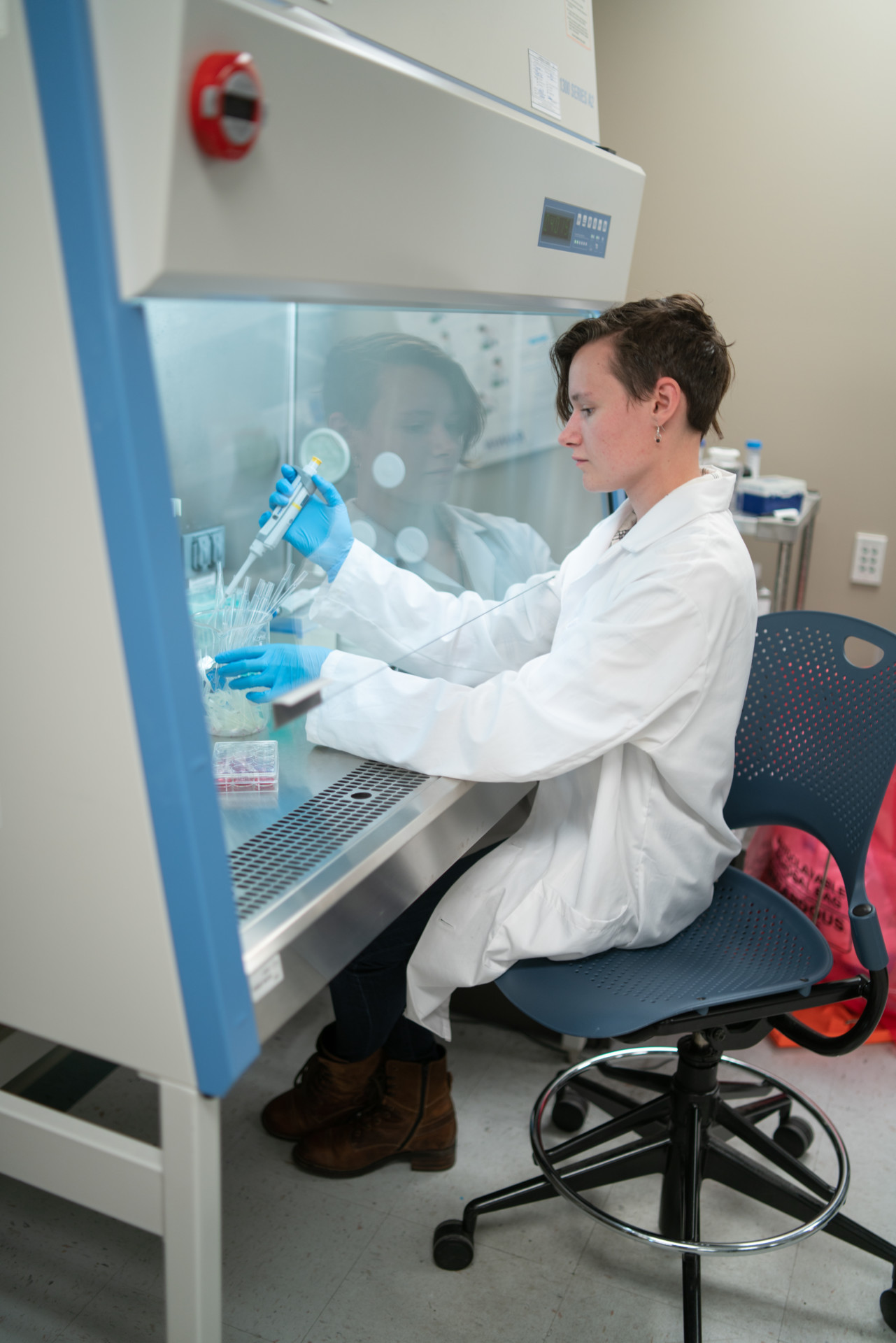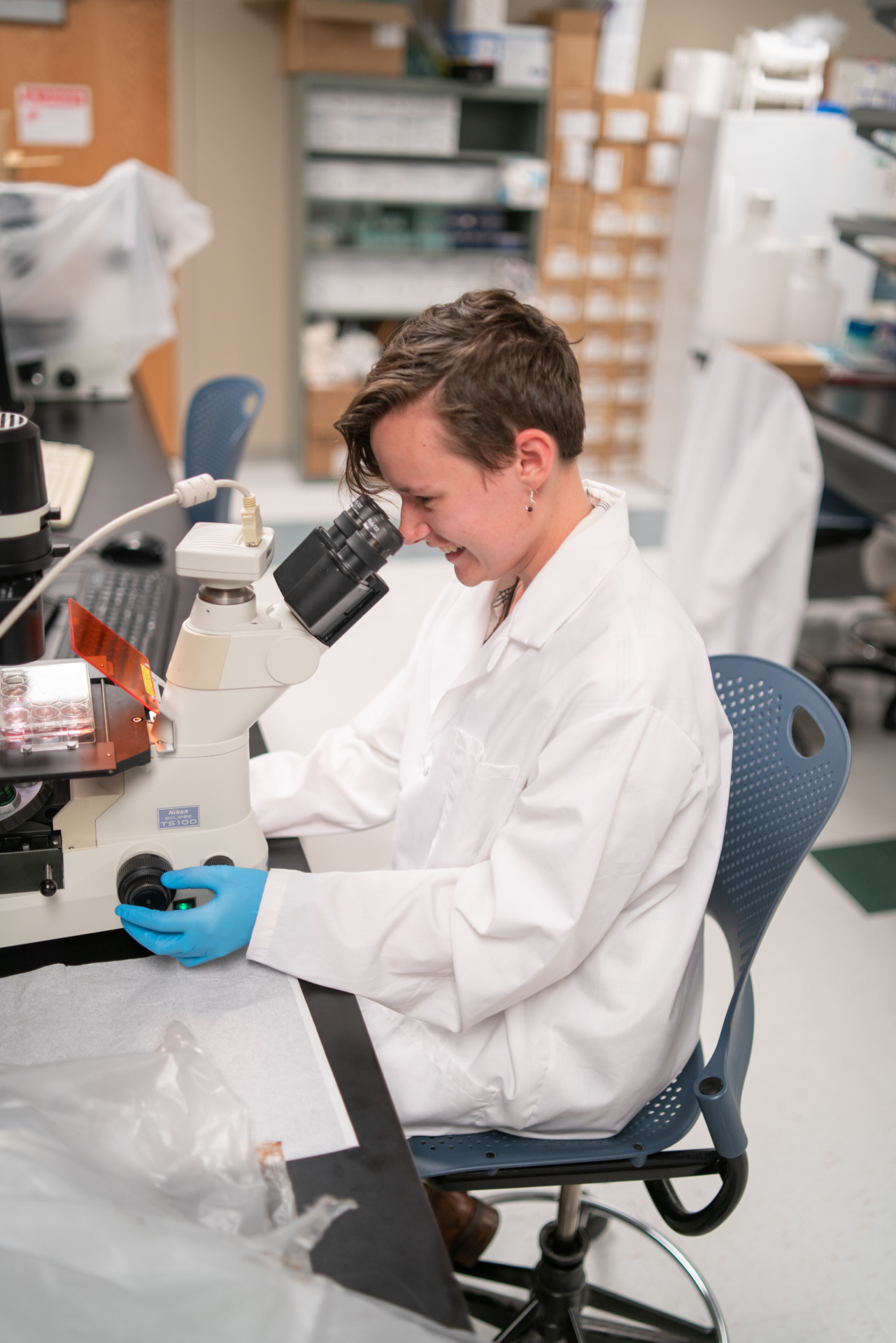Student Spotlight: Tessa Burrows

Each year the Office of Research chooses a few of our many exemplary Undergraduate Research Fellows to be Spotlight Students. We interview these students to learn more about their experiences as researchers and as undergraduate students at USU.
Tessa Burrows is studying Biological Engineering in the College of Engineering. Tessa is an experienced researcher, recipient of an Undergraduate Research & Creative Opportunities grant, and has already presented her research 6 times.
About You
Q: What is your name and where are you from?
A: Tessa Burrows from Denver, CO.
Q: What are your interests outside of school and your research?
A: I like to climb. I worked at a summer camp for the last few summers where I was a climbing counselor. I really
like to just chill in nature. I also enjoy D&D and knitting.
Q: What is one fun fact about you?
A: I have been to Africa. I went with a small group of students from my high school to learn more about bioconservation. I met with park rangers to learn about the ecological effects of poaching and current efforts to decrease it.
Your Studies and Research
Q: What are you studying?
A: I am studying biological engineering with a specific interest in biomedical engineering. I am also pursuing math and chemistry minors.
Q: What is the focus of your research?
A: I am focused on improving the current model of the retina. At the lab, I work with an easily accessible material at USU, spider silk and hagfish silk, to make membranes on which retina-specific cells will grow. The lab is focused on improving the current industrial model to make it more accurate to the thickness and porosity found in vivo.
Q: What is your favorite part of your research?
A: Because I work in a lab with a mix of students from all different levels of education (from undergraduate to Ph.D.), there are many opportunities to learn from others. The students support each other, help answer questions, and work together to add to existing research.
Q: When did you know what you wanted to study?
A: I actually began my college career in Mechanical Engineering. However, once I began taking those classes, I didn’t feel like it was such a great fit. I eventually learned more about my interests and a graduate student I met with told me that it sounded like I would enjoy Biological Engineering. And I do!
Q: What led you to Utah State?
A: I chose to go to Utah State because of the great opportunities for scholarships and undergraduate research.
A Typical Day
Q: Describe a typical day in the lab/field.
A: There are two main parts of the program I work for. That means that each day could be either a cell day, or a membrane day. During a membrane day, I am in the spider silk lab and cleanroom. We take spider silk proteins, solubilize them in water, spread them to different thicknesses, and leave them to dry. Once they are dry, they are peeled off the devices and examined for defects. If they do not have any large flaws, then they are stored until they need to be mounted on membrane inserts.
On a cell day, I work at the tissue engineering lab to monitor cell growth and perform different quantification techniques. I change the media for the cells that are growing. When an experiment is finished I may fix cells to new membranes, stain the membranes with protein markers, and then take images to quantify the success of an experiment.
Q: What skills or expertise do you have/are you growing through your research?
A: I have learned many hard skills from my research experience. I have been trained on the cleanroom, learned how to use different equipment, and seen what a biological engineering lab looks like. As I am planning on eventually earning my Ph.D., the experience that I have gained in the lab with different cell lines is invaluable.
Q: What has been a valuable USU resource for you and your research?
A: In bioengineering, labs are emphasized as a critical part of your studies. Because of this, there are many different people who can help you to get into a lab and learn new things. I also want to emphasize the importance of the URCO grant. It is a non-specific, very accessible grant that is available to students of all disciplines. This is a very valuable resource for students who are interested in research.
Mentor
Q: Who is your mentor?
A: Dr. Elizabeth Vargis.
Q: How did they become your mentor?
A: When I was a freshman, I did not know how to approach a professor about being in their lab, so I decided to learn more by sitting in on Dr. Vargis’ lab meetings. I learned that by sitting in on lab meetings, I was inadvertently making all the right choices! All professors have different requirements for joining a lab, but Dr. Vargis has a general requirement of attending lab meetings before discussing where a student could assist with a project. The important thing is to reach out to professors and students who are running projects to ask about their policy and any additional training you would need.
Q: What do you like about the collaboration process?
A: I meet with my mentor about once a week to review how things are going in the lab and talk about next steps. The collaboration process means that you do not have to take on sole responsibility over the entire lab process. You have people to turn to with questions, and you have delegated responsibilities. I like how this gives me a chance to learn from my mentor’s own experience.
Q: What is one valuable thing that research has taught you?
A: The most valuable thing that I have learned is the importance of curiosity in research. In research, no one will ever fault you for asking too many questions, or for having simple questions. In fact, Dr. Vargis encourages it! Asking questions is the driving force behind research.




